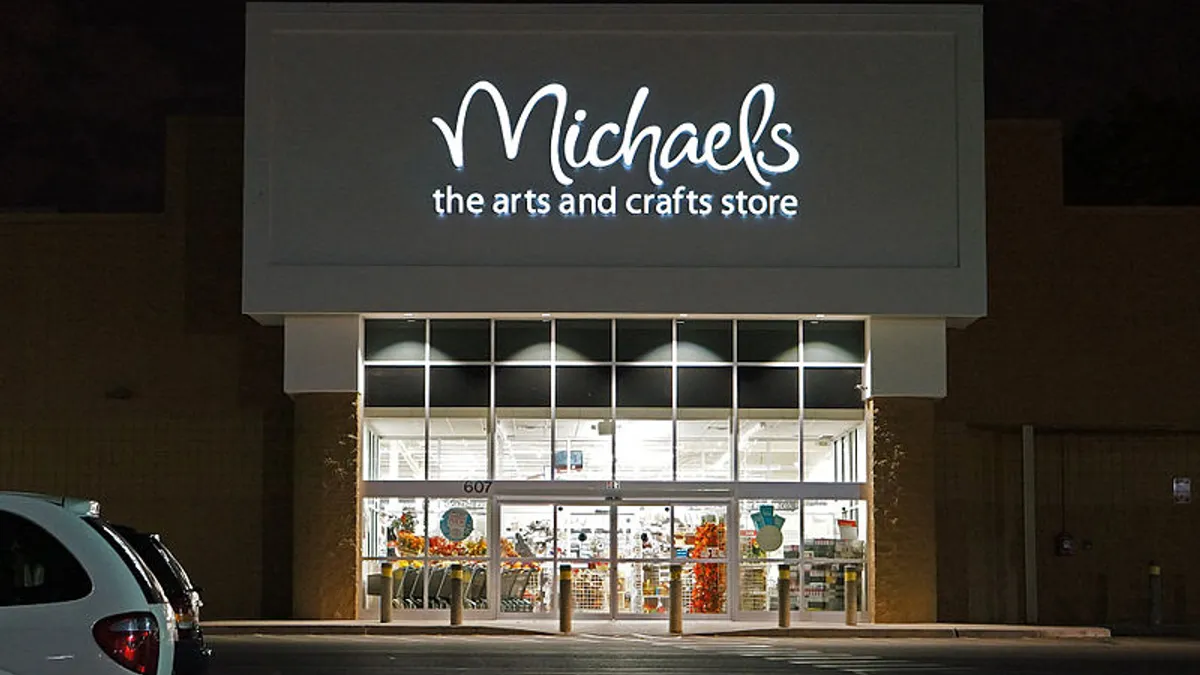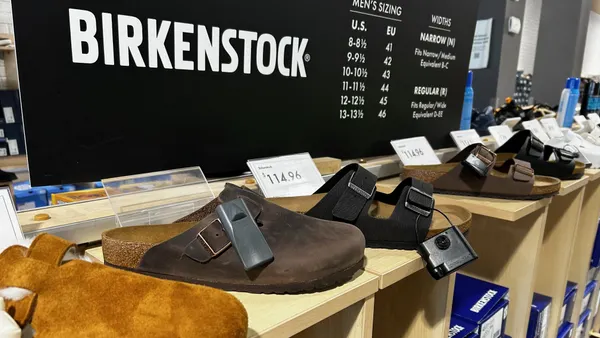Dive Brief:
-
The Michaels Companies on Wednesday announced it will close all 36 of its Pat Catan's stores in the fourth quarter. The chain, which it took over in 2016 when it acquired Lamrite West, operates in Ohio and surrounding states.
-
The company has plans to rebrand around 12 of the Pat Catan's stores and reopen them under the Michaels banner, according to a company press release.
-
Expecting a one-time after-tax cost of $44 million to $48 million to implement the changes, the retailer updated its fourth quarter guidance. Pat Catan's fiscal 2018 net sales are projected to be about $111 million with "no material impact" on Michael's consolidated adjusted operating income, excluding any related restructuring charges, primarily costs of terminating lease obligations, the write-off of fixed assets, liquidation and employee-related expenses, the company said.
Dive Insight:
It was only a matter of time before Pat Catan's would close once Michael's took it over almost three years ago, at least according to GlobalData Retail Managing Director Neil Saunders.
"I think there is a degree of inevitability about the closures," Saunders told Retail Dive in an email. "The acquisition ... back in 2016 was more about the wholesale division, Lamrite West, than the Pat Catan's shops. The Pat Catan's stores don't really add much to Michael's business and there are issues in building economies of scale and, in some cases, cannibalization of Michaels stores."
Some will live on as Michael's stores, which will allow the arts-and-crafts retailer to operate in areas it isn't in now. "However, it will need to work hard to keep Pat Catan's customers on board as many of them are loyal to what they see as a local brand," Saunders also said.
In its most recent quarter, Michaels moved the needle year over year, but isn't faring as well as rivals and doesn't seem to be benefiting much from either the strong economy or the demise of Toys R Us. Its 2.7% net sales increase in the period was bolstered by a 3.8% store comp increase (4.3% on a constant currency basis and 1.1% on a shifted-calendar basis), but operating income fell to $137.2 million from $153.9 million a year ago, due to lower gross profit and higher selling, and general and administrative expenses, the company said.
Executives have maintained that hobby spending is relatively low despite the economy, but Saunders disputes that. "Looking at the wider business, while this move will help Michaels' bottom line in the long run, it does not solve all of the issues the company has, he said. "It still needs to find a way to compete with the rise of rivals like Hobby Lobby, the push of generalists into the crafting space, and, most importantly, the rapid expansion of online specialists."















